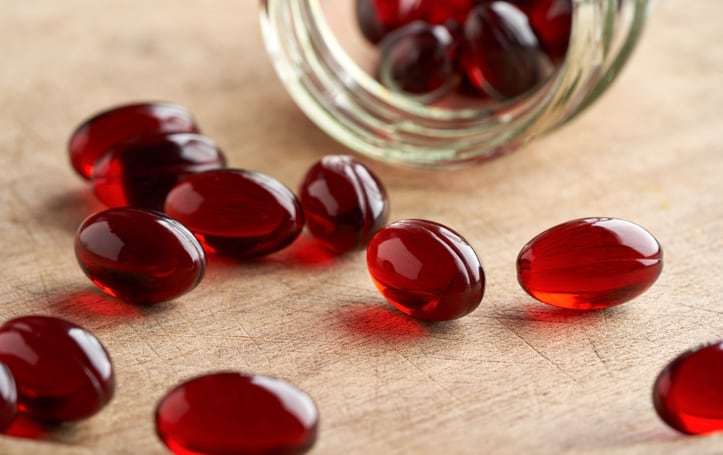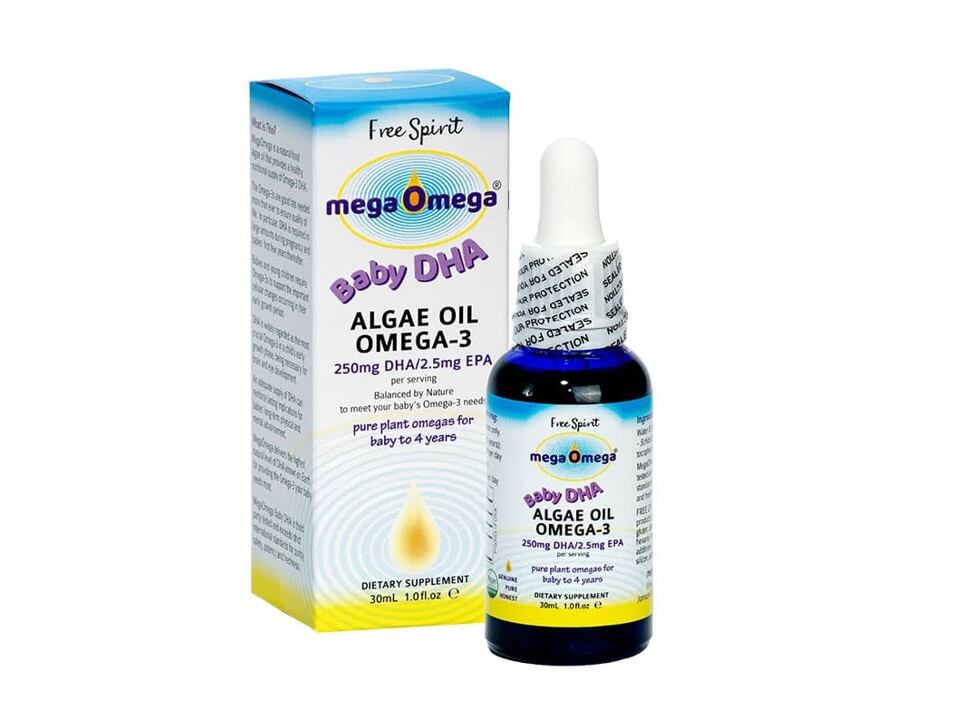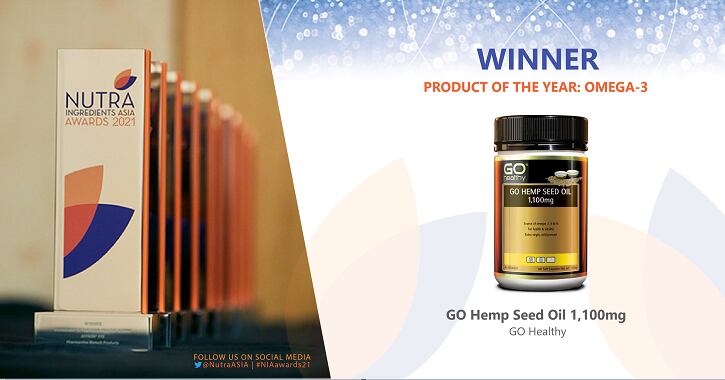Krill oil commonly contains about 40 per cent of phospholipids.
As phospholipid concentration becomes higher, the amount of omega-3 EPA and DHA will also increase at the same time.
In this case, the 61 per cent phospholipid krill oil contains 17 per cent and 9 per cent of EPA and DHA respectively. Total omega-3 stands at 30 per cent.
In contrast, the firm’s other versions of krill oil – with phospholipid concentrations ranging from 40 per cent to 56 per cent have a lower percentage of EPA, DHA, and total omega-3.
For example, its ‘Natura’ version of krill oil, which contains 40 per cent of phospholipids, contains 12 per cent and 6.5 per cent of EPA and DHA respectively, while total omega-3 is 23 per cent.
At the same time, the increase in phospholipids and omega-3 concentration also meant a lower concentration of astaxanthin.
In its 61 per cent phospholipid krill oil, there is about 100 ± 50 mg of astaxanthin in per kg of krill oil, whereas the amount of astaxanthin is higher in the ‘Natura’ version at 250 ± 50 mg per kg.
“In the Korean market, phospholipid content has been regarded as a key parameter of the krill oil quality. Most of the products sold in the Korean market have a phospholipid concentration of over 56 per cent.
“This is why we have decided to develop krill oil with over 60 per cent of phospholipids and could be encapsulated in soft gel capsules,” In-sik Kim, director and executive officer of the firm told NutraIngredients-Asia.
In fact, South Korea’s Ministry of Food and Drug Safety (MFDS) has recently proposed to follow the CODEX standards for locally sold krill oil products – in which the phospholipid content will be set at a minimum of 30 per cent.
The phospholipid content has been seen as a marker of krill oil quality as there has been instances where krill oil was mixed with vegetable oil and sold in the market.
Such products have a lower phospholipid content due to the presence of vegetable oil.
Kim said that the MFDS’s proposed phospholipid concentration “seemed appropriate”.
Since it has been commercialised in South Korea via an exclusive supply agreement with an online marketing company, Kim said that the market response has been “very good” and it has been one of the firm’s best-selling products.
Examples of brands using this krill oil included Atraum and Nutricore, which launched the product ‘Krill Oil 61’.
For both brands, their products are accredited with the ‘WCS’ and ‘NCS’ logos, which could only be used for products that have their phospholipid content tested using the nuclear magnetic resonance (NMR) method.
Kim added that the company has been planning to export its krill oil with 61 per cent of phospholipids to overseas markets, especially to North America, Europe, and China.
Process and benefits
Kim said that the freshness of krill was crucial in enabling a high concentration of phospholipids in krill oil.
“We use only frozen krill, not krill meal that has been dried on the ship. We also use the cold chain system [in transporting the frozen krill] before extraction [of krill oil].
“We also extract oil within 14 days after the frozen krill were unloaded from the freezing warehouse,” she said, adding that the company used only ethanol during the process.
The company works with Korean fishing companies, Jeongil Industries and Dongwon Industries which are in charge of krill harvesting in the Antarctic Ocean.
Kim added that high concentration phospholipids could aid the body’s absorption of EPA and DHA.
“The benefit of the krill oil comes from the fact that EPA and DHA are bonded at the phospholipids. It makes EPA and DHA better absorbed by the body.”





